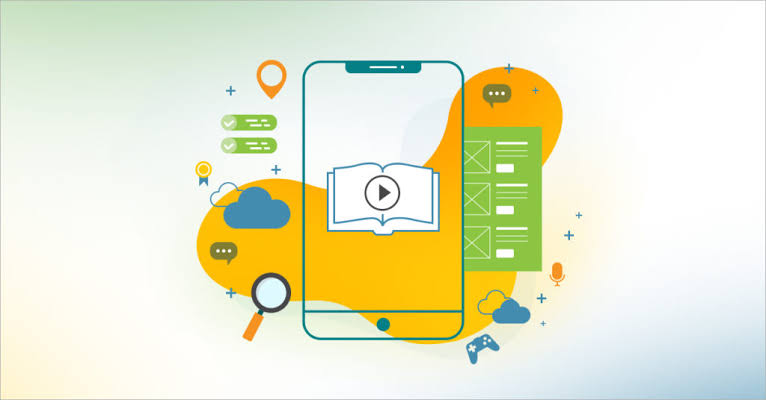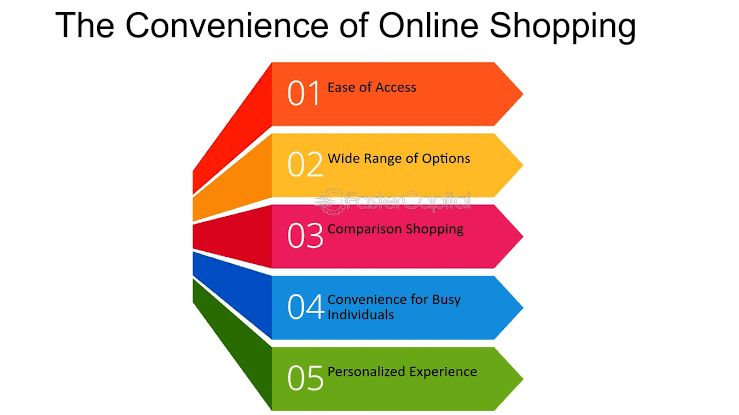
How Technology Powers Modern Healthcare and Saves Lives
Technology has played a vital role in transforming healthcare, improving patient outcomes, and saving lives. From telemedicine and wearable devices to AI-powered diagnostics and robotic surgeries, innovations have made healthcare more efficient, accessible, and accurate. Electronic health records (EHRs) have streamlined information sharing, while big data analytics provides insights for personalized treatment. With the help of these technologies, healthcare providers can deliver timely, precise,
✨ Raghav Jain

Introduction
The field of healthcare has always been one of the most critical sectors, with the power to impact life or death. Over the years, advancements in technology have radically transformed how medical professionals diagnose, treat, and manage health conditions. What was once reserved for research labs or hospitals with state-of-the-art equipment is now becoming more accessible, efficient, and effective. Technology has not only improved the quality of care but has also played a vital role in saving lives.
In this article, we will explore how technology powers modern healthcare, highlights the innovations that are shaping the industry, and demonstrates how these developments are making a real difference in saving lives. Technology has revolutionized the healthcare industry, making it more efficient, effective, and life-saving. Over the past few decades, technological advancements in medical equipment, data management, diagnostic tools, and treatment methods have drastically transformed how healthcare professionals diagnose, treat, and care for patients. The integration of digital technologies into healthcare systems has not only streamlined processes but also enhanced the accuracy and quality of care. Modern healthcare technologies are playing a pivotal role in diagnosing diseases early, developing innovative treatments, improving patient outcomes, and enabling a level of precision in healthcare that was once unimaginable. One of the most notable advancements is the development of diagnostic tools powered by artificial intelligence (AI) and machine learning. These tools can process vast amounts of data at a much faster rate than human clinicians, enabling them to detect patterns and anomalies that may go unnoticed by the human eye. For instance, AI algorithms are now capable of analyzing medical imaging data, such as X-rays, MRIs, and CT scans, to identify signs of diseases like cancer, stroke, or cardiovascular conditions. This ability to detect diseases early can be the difference between life and death, as early diagnosis often leads to more effective treatment options and better survival rates. In addition to diagnostic tools, the advent of telemedicine has brought healthcare services directly to patients, especially in remote or underserved areas. Telemedicine allows healthcare providers to conduct virtual consultations, monitor patients’ conditions remotely, and offer advice or treatment plans without the need for in-person visits. This not only saves time and resources for both patients and doctors but also makes healthcare accessible to individuals who may otherwise struggle to receive timely medical attention. The widespread use of wearable health devices, such as smartwatches and fitness trackers, has also contributed significantly to modern healthcare. These devices continuously monitor users’ vital signs, including heart rate, blood pressure, oxygen levels, and even sleep patterns. The data collected by these devices can be shared with healthcare providers in real-time, enabling them to track patients’ health status and make informed decisions. For example, wearable devices can alert doctors about irregularities in a patient’s heart rate, allowing for early intervention in cases of heart disease or arrhythmias. Furthermore, wearable technology can empower patients to take charge of their health by giving them real-time feedback about their lifestyle habits, encouraging healthier behavior and helping prevent chronic conditions. Another area where technology has made a significant impact is in personalized medicine, which tailors medical treatments to individual patients based on their unique genetic makeup, lifestyle, and other factors. Advances in genomics and biotechnology have made it possible to identify specific genetic mutations that contribute to certain diseases. With this knowledge, healthcare providers can develop customized treatment plans that target the root causes of these diseases, increasing the chances of successful outcomes. Precision medicine is particularly important in the treatment of cancer, where therapies can now be designed to target specific cancer cells without harming surrounding healthy tissue. This approach has significantly reduced side effects and improved the quality of life for many patients undergoing cancer treatment. In addition to improving diagnosis and treatment, technology has also played a crucial role in enhancing the efficiency of healthcare administration. Electronic health records (EHR) have replaced traditional paper-based systems, making it easier for healthcare providers to access and share patient information. EHRs streamline the process of recording medical histories, prescriptions, test results, and treatment plans, reducing the risk of errors and improving the continuity of care. With real-time access to patient data, healthcare professionals can make quicker, more informed decisions, resulting in better care outcomes. Technology has also facilitated the development of robotic surgery, which offers numerous benefits over traditional surgery. Robotic systems, such as the da Vinci Surgical System, allow surgeons to perform minimally invasive procedures with high precision and control. These systems provide enhanced visualization, dexterity, and accuracy, enabling surgeons to carry out complex surgeries with smaller incisions, reduced blood loss, and faster recovery times. Robotic surgery has been used in various medical specialties, including urology, orthopedics, and cardiology, leading to better surgical outcomes and shorter hospital stays for patients. Additionally, the development of 3D printing technology has opened up new possibilities in healthcare. 3D printing has been used to create custom prosthetics, implants, and even tissues and organs. For example, 3D-printed prosthetics can be tailored to the specific measurements and needs of individual patients, improving comfort and functionality. In the field of organ transplantation, researchers are exploring the use of 3D printing to create artificial organs that could one day reduce the shortage of donor organs. This technology is still in its early stages, but the potential to save lives and improve the quality of life for patients in need of organ transplants is enormous. Furthermore, advancements in pharmaceuticals and drug development have been accelerated by technology. The use of computer modeling and simulation allows researchers to design and test new drugs more efficiently, reducing the time and cost associated with drug development. These technologies enable researchers to identify promising drug candidates, optimize their chemical properties, and predict how they will interact with the human body. In the case of rare diseases, where traditional drug development might be too costly or time-consuming, technology has made it possible to create targeted therapies that can address these specific conditions, offering hope to patients who previously had no treatment options. The use of big data analytics in healthcare has also opened up new opportunities for improving patient care and outcomes. By analyzing large volumes of patient data, healthcare providers can identify trends, patterns, and correlations that can inform public health strategies, predict disease outbreaks, and identify the most effective treatment protocols. For example, analyzing data from millions of patients can help identify risk factors for diseases such as diabetes, heart disease, and obesity, leading to the development of preventative measures and early interventions. The integration of technology in healthcare has also led to advancements in healthcare accessibility. Artificial intelligence and machine learning are being used to develop language translation tools that can help healthcare providers communicate with patients who speak different languages. These tools break down language barriers, ensuring that patients receive accurate and timely care, regardless of their linguistic background. In some cases, AI-powered chatbots have also been introduced to provide initial consultations, answer patients’ questions, and offer general healthcare advice, helping to alleviate the burden on healthcare professionals and make healthcare more accessible to those in need. Finally, technology has played an essential role in improving the safety of healthcare delivery. Electronic prescribing systems have helped reduce medication errors, and barcode scanning systems are now used to ensure that patients receive the correct medications at the right time. Additionally, the development of clinical decision support systems (CDSS) has empowered healthcare providers to make evidence-based decisions, reducing the likelihood of clinical errors and improving patient safety. These systems use algorithms and patient data to provide healthcare professionals with real-time recommendations, alerts, and guidelines, ultimately leading to better care. In conclusion, technology has become an indispensable part of modern healthcare, saving lives, improving patient outcomes, and making healthcare more efficient, accessible, and safe. From AI-driven diagnostics and telemedicine to personalized treatments and robotic surgery, technological advancements are transforming every aspect of healthcare. As technology continues to evolve, the future of healthcare looks promising, with even more innovations on the horizon that will further enhance our ability to prevent, diagnose, and treat diseases. As these technologies continue to develop, they will undoubtedly lead to more lives saved, healthier populations, and a more effective healthcare system overall.
The Evolution of Technology in Healthcare
From ancient times, when herbs and rudimentary tools were used to treat illnesses, to the modern-day reliance on AI and telemedicine, the integration of technology into healthcare has been transformative. Today, we see a blend of old and new methods, all enhanced by technology, creating an ecosystem of improved care, prevention, and treatment.
Key Technological Milestones
- Early 1900s – Introduction of the X-ray and other diagnostic imaging tools
- 1950s–1960s – Development of heart-lung machines and organ transplantation techniques
- 1990s–2000s – Emergence of electronic health records (EHR) and diagnostic software
- 2010s–2020s – Growth of AI, telemedicine, robotics, and wearables in healthcare
As we continue to innovate, technology is playing a central role in making healthcare more personalized, efficient, and timely.
Medical Imaging and Diagnostics: Seeing the Unseen
Medical imaging has always been one of the key areas where technology has revolutionized healthcare. The ability to view inside the human body without invasive procedures has made diagnostics faster, more accurate, and less painful.
Advancements in Imaging Technologies
- MRI (Magnetic Resonance Imaging): Uses magnetic fields to produce detailed images of organs and tissues.
- CT scans (Computed Tomography): Combines X-ray technology and computer processing to create 3D images of the body.
- Ultrasound: Uses sound waves to view organs, tissues, and even a fetus during pregnancy.
- X-rays: Still a staple in diagnosing fractures, infections, and certain cancers.
Benefits
- Early detection of diseases like cancer, heart conditions, and neurological disorders
- Non-invasive and safer alternatives to traditional surgeries
- Allows for real-time monitoring of patients’ conditions, leading to timely interventions
Robotics in Surgery: Precision and Efficiency
Robotic surgery is one of the most remarkable innovations in healthcare. These systems enable surgeons to perform highly intricate procedures with precision, offering benefits like reduced recovery time, smaller incisions, and enhanced patient outcomes.
Key Robotic Systems
- Da Vinci Surgical System: Provides surgeons with 3D visualization, precision, and control during surgery.
- ROS (Robotic Operating System): Used in minimally invasive surgeries for various specialties like orthopedics, urology, and cardiac surgery.
- Robotic-assisted rehabilitation devices: Help patients recover from strokes or spinal injuries by offering guided therapy.
Benefits
- Faster recovery and reduced hospital stays
- Less pain and lower risk of infection
- Higher success rates due to precision and control during complex surgeries
Artificial Intelligence: Transforming Diagnostics and Treatment
Artificial Intelligence (AI) is arguably one of the most exciting technological advances in healthcare. AI algorithms are now capable of analyzing vast amounts of data, recognizing patterns, and making predictions with unparalleled accuracy.
AI-Powered Tools
- AI in radiology: Assists doctors in interpreting X-rays, MRIs, and CT scans with higher accuracy than traditional methods.
- AI in drug discovery: Accelerates the development of new medications by predicting the effectiveness of compounds in clinical trials.
- Virtual health assistants: AI-driven apps that provide medical advice, track symptoms, and recommend treatments.
Benefits
- Reduces diagnostic errors and speeds up decision-making
- Improves treatment outcomes by personalizing healthcare plans
- Facilitates early detection of diseases, including rare conditions
Telemedicine: Healthcare from Anywhere
The advent of telemedicine has been a game-changer, especially in the wake of the COVID-19 pandemic. Telemedicine allows patients to consult doctors remotely, breaking down geographic barriers and increasing access to care.
Popular Telemedicine Services
- Video consultations: Connecting patients and doctors in real-time through video calls
- Telehealth platforms: Platforms like Teladoc and MDLive offer virtual consultations, prescriptions, and follow-up care.
- Remote patient monitoring: Devices that allow doctors to monitor a patient’s vital signs remotely, such as blood pressure, glucose levels, or heart rate.
Benefits
- Increased access to healthcare, particularly for people in rural or underserved areas
- Reduces wait times and travel costs for patients
- Ensures continuity of care during pandemics or other disruptions
Wearables and Health Tracking: Monitoring Health in Real-Time
Wearable technology, such as fitness trackers and smartwatches, has gained immense popularity. These devices can track various health metrics, including heart rate, sleep patterns, physical activity, and even oxygen levels.
Types of Health Wearables
- Fitbit, Apple Watch, and Garmin: Monitor steps, heart rate, calories burned, and sleep.
- Continuous glucose monitors: Allow diabetic patients to track their blood sugar levels in real-time.
- ECG monitors: Devices that monitor heart rhythms and detect abnormalities.
Benefits
- Allows users to take proactive steps toward their health
- Enables doctors to monitor chronic conditions remotely
- Provides early warning signs for health problems, such as heart attacks or strokes
Genomics and Personalized Medicine: Tailored Treatments
With advancements in genomics, healthcare is moving toward a more personalized approach to treatment. By analyzing a person’s DNA, doctors can provide tailored therapies that are more effective and have fewer side effects.
Key Developments in Genomics
- Gene editing (CRISPR): Allows for precise changes in the DNA to correct genetic disorders.
- Genomic sequencing: Helps doctors understand a patient’s genetic predisposition to diseases and customize treatment plans.
- Pharmacogenomics: Studies how genes affect an individual’s response to drugs, allowing for personalized medication.
Benefits
- More effective treatments tailored to the individual
- Reduces adverse reactions to medications
- Offers potential cures for genetic diseases and cancers
Digital Health Records: Streamlining Patient Care
Electronic health records (EHR) have streamlined the way healthcare professionals access patient information. These digital records ensure that medical data is easily accessible, up-to-date, and shared securely between providers.
Key Features of EHR Systems
- Centralized data: All patient information, including medical history, test results, and treatment plans, are stored in one place.
- Interoperability: Allows different healthcare systems to share information, improving coordination of care.
- Patient portals: Empower patients to access their health information, schedule appointments, and request prescriptions.
Benefits
- Reduces medical errors and improves the quality of care
- Ensures more efficient communication between doctors and specialists
- Improves patient engagement and satisfaction with healthcare services
The Future: AI, Blockchain, and Beyond
Looking ahead, emerging technologies such as blockchain and augmented reality (AR) are poised to further revolutionize healthcare.
Blockchain in Healthcare
Blockchain technology can provide secure, tamper-proof storage of patient data, reducing fraud and improving privacy. It could also streamline billing processes and ensure transparency in clinical trials.
Augmented Reality for Surgery and Training
AR can be used to provide real-time overlays of a patient’s anatomy during surgery or offer immersive training experiences for medical professionals.
Benefits
- Increases data security and patient privacy
- Offers enhanced training and education for healthcare professionals
- Improves the accuracy of surgical procedures and medical diagnoses
Conclusion
Technology has transformed healthcare from an industry reliant on physical examination and guesswork to one that leverages data, AI, and precision tools to save lives. From diagnostic imaging and robotic surgeries to AI-driven treatment plans and remote monitoring, technology has become an indispensable part of modern healthcare. It has not only improved the accuracy and accessibility of medical care but has also made it more efficient, cost-effective, and personalized.
As technology continues to advance, we can expect even greater strides in medicine, offering new hope for patients and further improving outcomes. Healthcare today is not just about treating illness—it’s about prevention, management, and empowering patients to take control of their health. The future of healthcare is bright, and technology will remain at the heart of its evolution, ensuring that lives are saved and better care is available to all.
Q&A Section
1. How has technology transformed healthcare in recent years?
Ans:- Technology has revolutionized healthcare by introducing innovations like telemedicine, electronic health records, and advanced medical devices. These advancements have improved patient care, enhanced diagnostic accuracy, and streamlined treatment processes, leading to better health outcomes.
2. What role does telemedicine play in modern healthcare?
Ans:- Telemedicine allows patients to consult healthcare professionals remotely, breaking down geographical barriers and providing easier access to care, especially in rural areas. It also helps during emergencies when in-person visits aren’t possible, ensuring timely medical advice and treatment.
3. How do wearable devices contribute to healthcare?
Ans:- Wearable devices like fitness trackers and smartwatches monitor vital signs, track physical activity, and even detect early signs of health issues. This real-time data helps both patients and healthcare providers make informed decisions about health and wellness.
4. How does AI assist in diagnostics and treatment?
Ans:- Artificial Intelligence (AI) aids healthcare by analyzing vast amounts of medical data for accurate diagnostics, such as detecting early stages of diseases like cancer. AI also helps in personalized medicine by recommending tailored treatment plans based on individual health data.
5. What impact has robotics had on surgeries?
Ans:- Robotic surgery enables highly precise, minimally invasive procedures that reduce recovery times, minimize the risk of complications, and improve surgical outcomes. Surgeons can perform delicate operations with enhanced accuracy using robotic assistance.
6. How does technology enhance patient monitoring in hospitals?
Ans:- Advanced monitoring systems provide continuous observation of a patient’s vital signs, ensuring immediate intervention if any abnormalities are detected. This improves patient safety and helps healthcare professionals respond promptly to changes in a patient’s condition.
7. What are electronic health records (EHR) and how do they improve patient care?
Ans:- Electronic Health Records (EHR) are digital versions of patients' medical histories, providing easy access to healthcare providers. EHRs streamline communication between doctors, reduce the risk of errors, and ensure that all healthcare providers have the most up-to-date information, leading to better decision-making.
8. How does technology help in drug discovery and development?
Ans:- Technology accelerates drug discovery by using algorithms and simulations to predict how different compounds will behave in the human body. It also helps identify potential drug candidates faster and more accurately, which is crucial for developing treatments for various diseases.
9. What role does big data play in healthcare?
Ans:- Big data analytics helps healthcare providers gather and analyze vast amounts of patient data to identify trends, improve clinical practices, and predict future health outcomes. It enables more effective treatment plans, early disease detection, and better population health management.
10. How does technology improve access to healthcare in underserved areas?
Ans:- Technology enables mobile health clinics, telemedicine, and virtual care to reach remote or underserved communities. This improves healthcare access in regions with limited healthcare infrastructure, helping bridge the gap in care availability.
Similar Articles
Find more relatable content in similar Articles

The Rise of Green Tech: Innova..
Green technology is revolutio.. Read More

Tech vs Nature: Can They Coexi..
The debate of "Tech vs Nature".. Read More

From Classroom to Career: App..
Skill-building apps help stud.. Read More

E-Commerce and the Convenience..
E-commerce has revolutionized .. Read More
Explore Other Categories
Explore many different categories of articles ranging from Gadgets to Security
Smart Devices, Gear & Innovations
Discover in-depth reviews, hands-on experiences, and expert insights on the newest gadgets—from smartphones to smartwatches, headphones, wearables, and everything in between. Stay ahead with the latest in tech gear
Apps That Power Your World
Explore essential mobile and desktop applications across all platforms. From productivity boosters to creative tools, we cover updates, recommendations, and how-tos to make your digital life easier and more efficient.
Tomorrow's Technology, Today's Insights
Dive into the world of emerging technologies, AI breakthroughs, space tech, robotics, and innovations shaping the future. Stay informed on what's next in the evolution of science and technology.
Protecting You in a Digital Age
Learn how to secure your data, protect your privacy, and understand the latest in online threats. We break down complex cybersecurity topics into practical advice for everyday users and professionals alike.
© 2025 Copyrights by rTechnology. All Rights Reserved.